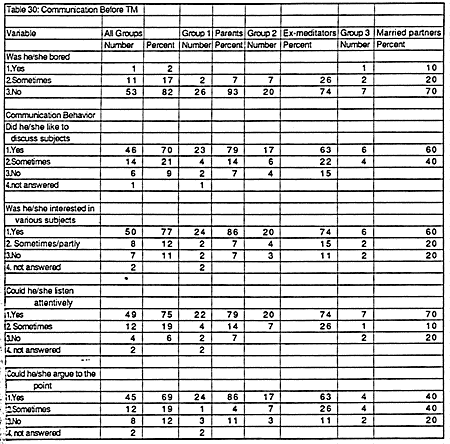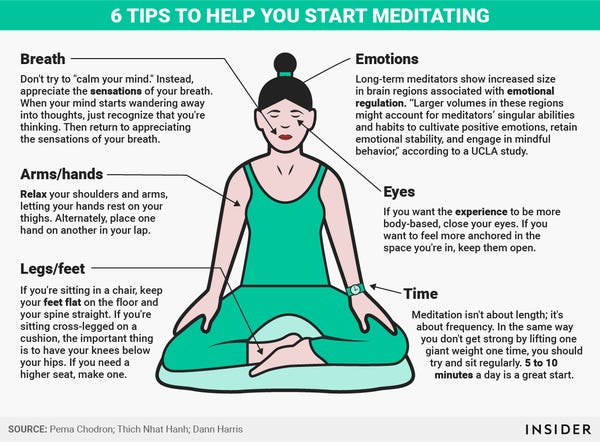
The first step in practicing gratitude is to be grateful. Try to be grateful and then focus on that feeling. Notice how your body and thoughts feel. Try to stop judging yourself and become present. This can help you realize that being grateful for all the good things in your life is a natural state of happiness. There are many options for practicing gratitude. You can send someone a message of appreciation or write a thank-you note.
Next, find something small to be grateful for. Even if you're not a mindful person, finding one small thing to be thankful for will increase your resilience and well-being. To start, follow the advice of Elaine Smookler. Focus on your breath to practice gratitude. This is a powerful way to keep yourself in the present moment, where busy minds are naturally pulled to busyness. Then, take some time to notice the sensations in your body and direct your attention toward the object of your gratitude.

There are many meditations on gratitude, and they all have similar benefits. For a gratitude meditation to start, you will need to lay down and close your eyes. Even creativity is possible. Whatever method you choose, you should find one that works for you. Another option is to prepare your bedroom, close your eyes and think about all the things that you are grateful for. You will eventually learn how to practice gratitude by repeating the words "thanks" to yourself.
You can also use guided videos to practice gratitude meditation. The guide guides you through the steps to gratitude meditation. This video is ten minutes long and is suitable for absolute beginners. The download link is located at the bottom. After you have completed the meditation you can feel your gratitude and feelings. This practice will teach you compassion, empathy, and appreciation for all the good things in your life.
Practice gratitude can have many benefits. You can feel happier, more optimistic, and it can make you feel better. Not only will it make you feel happier, but it will also help you to be more grateful for what you have in life. Grit will help you to be more appreciative of all things. It can be practiced whenever you want, so it can be done whenever you feel like it. One of the benefits of practicing gratitude meditation is that it can be practiced regularly and will improve your self-esteem.

Taking time to write down your gratitude is an effective way to cultivate gratitude. Writing your gratitude down will allow you to communicate your feelings more effectively. This can lead you to being happier and healthier. Sharing gratitude will not only make you feel happier but it will also help others. Expressing gratitude can make a big difference in your relationships. When you are able to recognize and express your gratefulness to others, your life will be more fulfilling and you'll be able to focus on the details that really matter to you.
FAQ
Do I need to count calories
You might wonder, "What's the best diet for me?" or "is counting calories necessary?" Well, the answer depends on several factors including your current health status, your personal goals, your preferences, and your overall lifestyle.
The Best Diet for me - Which One Is Right for You?
My current health status, personal goals, preferences, and overall lifestyle all play a role in choosing the right diet. There are many options, both good and bad. Some diets work better than others. So what do I do? How do I make a good decision?
These are the questions this article will answer. It starts with a brief introduction of the different types of diets available today. Then, the pros and cons of each type of diet are discussed. We'll then discuss how to choose which one is best for you.
To begin, let's take a quick look at the different types of diets.
Diet Types
There are three types of diets available: ketogenic, high-protein, and low fat. Let's talk about them briefly.
Low Fat Diets
A low-fat diet reduces the amount of fats you eat. This is achieved through reducing intakes of saturated fats (butter and cream cheese, for example). You can replace them with unsaturated oils (olive oil and avocados) For those looking to lose weight quickly, a low-fat diet is often recommended. This diet can cause constipation, heartburn, and stomach problems. Vitamin deficiencies can also occur if the person doesn't get enough vitamins through their diet.
High Protein Diets
High protein diets are known to restrict carbohydrate intake and promote the consumption of proteins. These diets often have higher levels of protein than most other diets. These diets are meant to increase muscle mass, and burn more calories. Unfortunately, they can't provide adequate nutrition for those who eat regularly. They can also be very restrictive so they may not be suitable for everyone.
Ketogenic Diets
Ketogenic diets can also be known as keto diets. They are high-fat and low in carbs and protein. They are typically used by athletes and bodybuilders because they allow them to train harder and longer without getting tired. They do require strict compliance to avoid any side effects like fatigue, headaches, nausea, and headaches.
Why do we need to have a healthy lifestyle?
Living a healthy lifestyle can help you live longer and more happy lives. Good nutrition, exercise regularly, good sleep habits, stress management and healthy lifestyle can help you avoid heart disease and stroke.
A healthy lifestyle helps us cope better when we are faced with everyday stresses. Having a healthy lifestyle will also boost our self confidence and help us look and feel younger.
Is it possible to have a weak immune system due to being cold?
Cold causes a decrease in immune system strength. This is because white blood cells are less effective at fighting infection. You will feel less pain if you are cold.
What's the problem with BMI?
BMI stands for Body Mass Index, which is a measurement of body fat based on height and weight. BMI is calculated using the following formula:
Divide the weight in kilograms by the height in meters squared.
The score is expressed as a number between 0 and 25. Scores between 0 and 25 indicate obesity. A score of 18.5 indicates overweight. A score of 23 indicates obesity.
A person of 100 kg with a height of 1.75m will have 22 BMI.
How often should i exercise?
Exercise is essential for maintaining a healthy lifestyle. However, there isn't a set amount of time you must spend working out. The key is finding something you enjoy and stick with it.
If you work out three times a week, then aim to complete 20-30 minutes of moderate intensity physical activity. Moderate intensity means that you will still be working hard even after your workout is over. This type workout burns about 300 calories.
For those who prefer to walk, you can go for 10-minute walks four times a week. Walking is low-impact, easy on your joints, and it's also very gentle.
You can also run for 15 minutes, three times per week. Running is an excellent way to lose weight and tone your muscles.
If you're not used to exercising, start slowly. Start by doing 5 minutes of cardio each day, a few times per week. Gradually increase the duration until you reach your goal.
Statistics
- The Dietary Guidelines for Americans recommend keeping added sugar intake below 10% of your daily calorie intake, while the World Health Organization recommends slashing added sugars to 5% or less of your daily calories for optimal health (59Trusted (healthline.com)
- This article received 11 testimonials and 86% of readers who voted found it helpful, earning it our reader-approved status. (wikihow.com)
- In both adults and children, the intake of free sugars should be reduced to less than 10% of total energy intake. (who.int)
- Extra virgin olive oil may benefit heart health, as people who consume it have a lower risk for dying from heart attacks and strokes according to some evidence (57Trusted Source (healthline.com)
External Links
How To
What does the "vitamins” word mean?
Vitamins are organic compounds found naturally in food. Vitamins are essential for our bodies to absorb nutrients from the foods we eat. Vitamins are not made by the body, so they must be obtained through food.
There are two types of vitamins: water soluble and fat soluble. Water-soluble vitamins dissolve readily in water. Vitamin C,B1(thiamine), B2 (2riboflavin), and B3 (3niacin), as well as vitamin C,B1, B2 (riboflavin), and B3 (niacin), vitamin B6 (pyridoxine), vitamin folic acid (biotin), pantothenic, and choline are examples. The liver and fatty tissues are home to fat-soluble vitamins. Examples include vitamin D, E, K, A, and beta carotene.
Vitamins can be classified by their biological activity. There are eight major groups of vitamins:
-
A - vital for healthy growth.
-
C – essential for proper nerve function.
-
D - essential for healthy bones, teeth, and gums.
-
E is required for good vision and reproduction.
-
K – Required for healthy nerves & muscles.
-
P - Vital for strong bones and teeth.
-
Q - aids digestion and absorption of iron.
-
R - Required for red blood cell production
The recommended daily allowance (RDA), for vitamins, varies depending upon age, gender, or physical condition. RDA values are set by the U.S. Food and Drug Administration (FDA).
For example, the RDA for vitamin A is 400 micrograms per dayfor adults 19 years or older. Pregnant women require 600 micrograms daily to support fetal development. Children ages 1-8 require 900 micrograms per day. For infants younger than one year, 700 micrograms are required daily. However, this number drops to 500 micrograms each day for children aged 9-12 months.
Children aged 1-18 years need 800 micrograms daily, while children overweight require 1000 micrograms per days. Children who are severely obese or underweight will need 1200 micrograms each day.
2200 mg of vitamin A per day is required for children aged 4-8 who have been diagnosed by anemia.
2000 micrograms is the minimum daily intake for adults over 50 years old to maintain good health. Because of their higher nutrient needs, women who are pregnant or nursing need 3000 mg per day.
Adults over 70 years of age need 1500 micrograms per day since they lose about 10% of their muscle mass each decade.
Women who are pregnant or lactating need more than the RDA. Pregnant and breastfeeding women require 4000 micrograms each day during pregnancy and 2500 Micrograms each day after delivery. Breastfeeding mothers need 5000 mg per day when breastmilk is being produced.